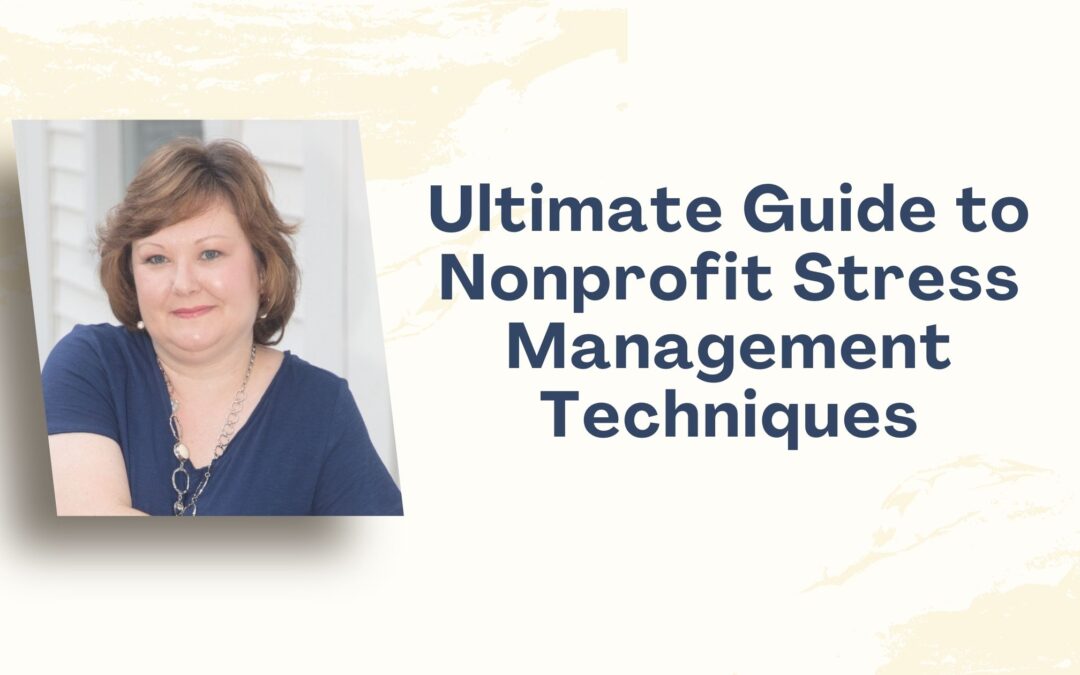Key Highlights
- Learn about mindful leadership and why it matters for nonprofit groups.
- Discover simple mindfulness exercises you can easily add to your daily life to help with workplace stress.
- See how mindfulness greatly affects stress management, decision-making, and emotional intelligence.
- Find helpful ways to tackle common challenges in using mindful leadership practices in your nonprofit.
- Access important resources and tips to build a lasting mindfulness practice for your long-term health and well-being.
Introduction
In the tough and emotionally intense world of nonprofit organizations, it is very important to focus on workplace safety, stress management, and mental health, especially for leaders. Dealing with workplace stress well can improve the health of employees and foster a healthy workplace environment that helps the organization do its job better. This complete guide, a free online resource, offers real stress management tools made especially for nonprofit leaders. This way, they can build a healthier and more effective work environment.
Understanding Mindful Leadership in Nonprofits
Navigating the nonprofit world can be rewarding but also very challenging. Nonprofit leaders often feel a lot of pressure. They carry the weight of their organization’s mission and the needs of the people they serve. This pressure and having little resources and heavy workloads can cause long-term stress.
Mindful leadership can help nonprofit leaders manage stress and succeed in their roles. By practicing mindfulness, leaders can grow their emotional intelligence, make better decisions, and create a more positive work culture.
The Essence of Mindful Leadership
Mindful leadership focuses on being aware and compassionate in the present moment. It means noticing our thoughts, feelings, and physical sensations without getting lost in them. By practicing this awareness, we can better manage our emotional responses, especially when faced with stress.
In the nonprofit industry, mindful leadership means leading with honesty, empathy, and a true understanding of what people go through. It’s about making sure both leaders and team members feel recognized, listened to, and important. This approach helps build trust and teamwork, which are vital for handling the challenges of the nonprofit world.
When leaders practice mindfulness, they inspire their teams to do the same. This creates a positive effect that spreads throughout the organization. It’s about developing leadership skills that focus on well-being, emotional responses, and a shared dedication to the group’s goals.
Key Components of Mindful Leadership
Mindful leadership includes important parts that help create a better and happier work culture. When nonprofit leaders focus on these areas, they can build a work environment that cares for their staff’s well-being and emotional intelligence:
- Self-Awareness: Mindful leaders become self-aware by noticing their thoughts, feelings, and physical sensations. This helps them identify their stressors and find good ways to cope.
- Empathy and Compassion: Understanding and relating to others’ feelings is key to mindful leadership. When leaders show empathy and compassion to their team, it creates a more supportive and caring work environment.
- Active Listening: Mindful leaders prioritize active listening, giving their full attention to the person speaking. This builds trust, improves communication, and ensures the employee’s needs are understood.
The Impact of Mindfulness on Nonprofit Leaders
Research shows that mindfulness practices can help with workplace stress. This is especially true in tough fields like the nonprofit sector. For leaders, using mindfulness can benefit their health and their organizations.
When nonprofit leaders practice mindfulness, they can handle tough situations more calmly and clearly. This helps them make better choices, build stronger team relationships, and create a more resilient and effective organization.
Navigating Stress with Mindfulness
Stress management is something you do all the time. Mindfulness gives you strong ways to manage your emotions when facing work challenges. One simple but effective technique is mindful breathing. This means focusing on how your breath goes in and out of your body. Just a few deep breaths can calm your nervous system and help you move away from stressful thoughts, allowing you to better focus on your day’s tasks.
Besides breathing, mindful walking or gentle stretches during the day can really help you feel grounded. These activities can reduce the physical tension that often comes with stress. By being mindful of everyday tasks, you turn them into chances for stress reduction.
Keep in mind that even short moments of mindfulness done consistently can make a big difference in your well-being. By practicing these techniques, you can build resilience and create effective ways to cope, which will help you manage your role better.
Improving Decision-Making and Emotional Intelligence
When we are stressed, it can be hard to make good decisions. We might act quickly without thinking. Mindfulness helps us understand our emotions better. It shows us how our feelings influence our choices. When we learn to notice our emotions without judging them, we can take a moment before reacting.
This slight pause lets us think more clearly about how to respond. As we improve our emotional intelligence, we better handle tough situations and resolve conflicts. We can make better decisions, even when things are very stressful. This helps us lead with more understanding and kindness, making the work environment better for everyone.
When your level of frustration grows, it’s time to practice mindfulness. See these moments as chances to show patience and kindness, to yourself and your team members.
Integrating Mindfulness into Daily Leadership Practices
Weaving mindfulness into your daily life is easy and doesn’t take much time. Small changes can make a big difference. Adding mindfulness to your leadership isn’t just about reducing stress. It’s also about creating a more mindful work environment.
Think about adding mindfulness to your talks, meetings, and decision-making. When you lead by example, you allow your team to do the same. This helps build a present, focused, and supportive work environment.
Simple Mindfulness Exercises for Every Day
Making mindfulness part of your daily life can be easy. Start with simple activities each day, and slowly extend the time as you feel more at ease:
Morning Mindfulness:
- Begin Your Day with Intention: Before you grab your phone, take a few moments for yourself. Sit comfortably, close your eyes, and pay attention to your breath. Feel your chest rise and fall as you breathe in and out.
- Mindful Check-in: Pause throughout the day to notice how your body feels, what thoughts appear, and how your emotions change.
- Gratitude Practice: Think of three things you appreciate. It can be something small, like a warm cup of tea or a kind coworker.
Throughout the Day:
- Mindful Walking: While walking to your next meeting, notice how your feet touch the ground and feel your body move. Listen to the sounds around you.
- Tech Breaks: Take regular breaks from your computer and phone. Use these times to stretch, take some deep breaths, or rest your eyes.
Evening Wind-Down:
- Mindful Transition: Set a clear boundary between work and home life. Reflect on your day and let go of any remaining tasks.
- Rest and Recharge: Make it a priority to get enough sleep. Build a calming bedtime routine that tells your body it’s time to relax.
Implementing Mindful Meetings and Communication
Transform your meetings into chances for better focus and presence. Start by having a clear intention for the meeting. This will help everyone to be truly present. A short moment of silence or a quick grounding exercise can make the mood more mindful.
Mindful communication can greatly improve staff interaction. Encourage everyone to listen actively. This means giving full attention to the speaker without interruptions. Make sure everyone has a chance to be heard. This helps create a culture of respect and understanding.
Adding mindful practices to your work culture builds an environment that cares about well-being and real connection. This leads to more productivity, creativity, and job satisfaction.
Overcoming Obstacles in Mindful Leadership
Introducing mindfulness at work, especially for leaders, can be challenging. People may resist change, feel short on time, or doubt its effectiveness. However, a steady and gentle approach can overcome these issues.
It’s important to show the real benefits of mindfulness, including better focus, stress reduction, and stronger emotional intelligence. We should also offer easy-to-use resources and support to motivate everyone. Creating a culture that values well-being as a key principle can help encourage participation.
Addressing Common Barriers and Solutions
Implementing new practices, like mindfulness, in any organization requires time and effort. Here are some common challenges you might face:
- Time Constraints: Many people worry about not having enough time. Let your team know that they can include mindfulness in their daily activities, even in small ways. Suggest taking short breaks during the day for mindful breathing or stretching.
- Resistance to Change: Change can be hard, and some people might initially feel unsure. Introduce mindfulness slowly. Start with quick exercises during meetings or offer optional workshops to help people learn about it.
- Job Insecurity or High Work Demands: Stress levels often rise in busy workplaces, especially where job insecurity is a concern. Consider implementing measures to reduce workload stress and create a culture that supports employee well-being.
You can build a supportive environment by recognizing these challenges and finding solutions. This will encourage more people to participate and help make mindfulness a part of your organization.
Building a Sustainable Mindfulness Practice
Creating a sustainable mindfulness practice requires commitment and ongoing support. It’s about integrating mindfulness into the very culture of your organization, making it an integral part of how you work and lead. To cultivate long-term engagement, consider offering:
- Ongoing Workshops and Training: Provide regular opportunities for staff members to deepen their understanding and practice of mindfulness.
- Mindfulness Resources: Make additional resources readily available, such as books, apps, or guided meditations, to support individual practices.
|
Resource Category |
Description |
Examples |
|
Apps: |
Offer guided meditations and mindfulness exercises. |
Calm, Headspace, Insight Timer |
|
Books: |
Provide in-depth guidance on mindfulness practices. |
“Mindful Work” by David Gelles, “The Mindfulness Revolution” by Jon Kabat-Zinn |
|
Workshops: |
Offer in-person or virtual training sessions on specific mindfulness techniques. |
Mindful Leadership Training, Stress Reduction Workshops |
By consistently investing in these resources and demonstrating a commitment to mindfulness from a leadership level, you can help create a more mindful, compassionate, and impactful organization.
Conclusion
In conclusion, mindfulness in nonprofit leadership can greatly help manage stress and make decisions. When leaders use mindful practices daily, they can improve their emotional intelligence and handle stress better. This leads to better well-being in their organizations. These techniques can help leaders make smart choices and create a strong culture of resilience. It’s important to know that practicing mindfulness benefits not just individual well-being but also nonprofit groups’ success and long-term health. Start your journey toward mindful leadership today to create a better and more effective nonprofit environment.
Frequently Asked Questions
How can mindfulness improve decision-making in stressful situations?
Mindfulness helps us make better decisions, especially when we are stressed at work. It boosts emotional intelligence. With stress management techniques, people can think more clearly. They can see how they feel and choose their actions wisely. This way, they do not react quickly and thoughtlessly due to stress.




Recent Comments